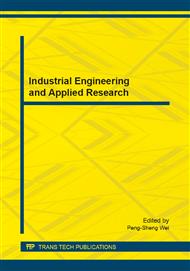p.123
p.127
p.133
p.137
p.143
p.148
p.154
p.158
p.162
The Automobile Tension Bar Time-Varying Reliability Sensitivity Analysis
Abstract:
In this paper, the design of a automobile tension bar analysis example, the use of sensitivity analysis of time-varying reliability robust optimal design tension bar design parameters for reliability sensitivity analysis shows that the reliability of the impact of the strength of the material and rod diameter is positive, and the reliability of the impact of the load and rod diameter is negative. Correct application of time-varying reliability robust optimal design of mechanical parts when variant reliability robust optimization design, design service at any time during the period were not sensitive to changes of the design parameters of the reliability of the parts, and improve the parts reliability soundness.
Info:
Periodical:
Pages:
143-147
Citation:
Online since:
August 2014
Authors:
Price:
Сopyright:
© 2014 Trans Tech Publications Ltd. All Rights Reserved
Share:
Citation:


